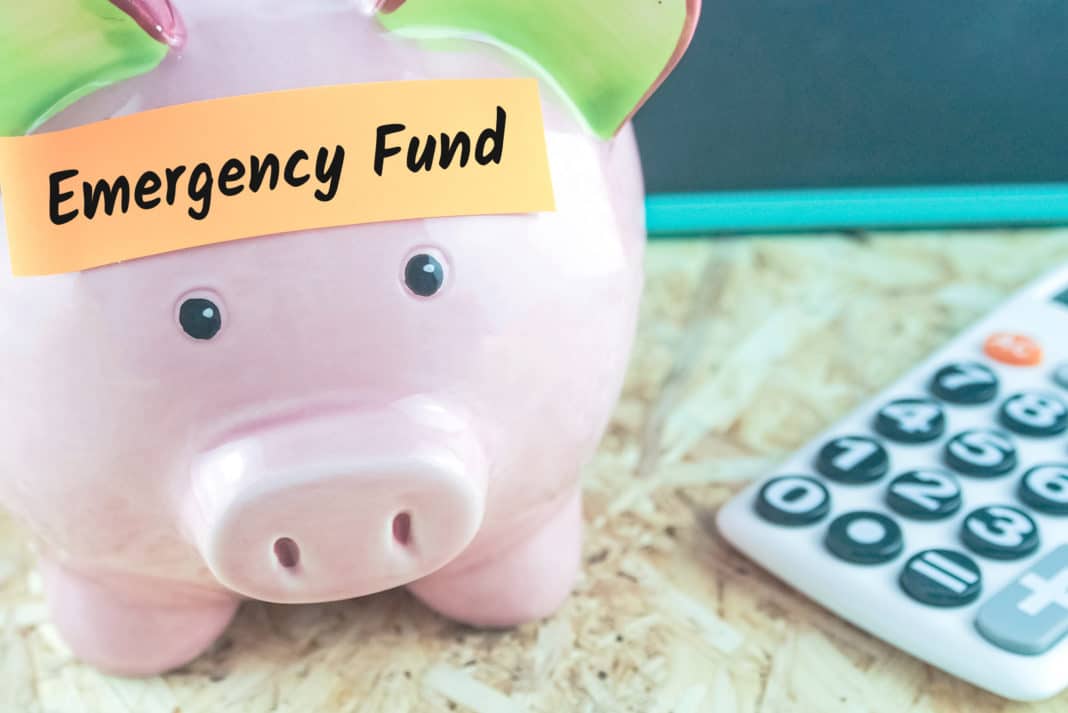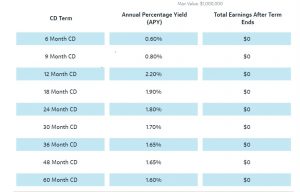
Where to Put Your Emergency Fund
By MacKenzy Pierre
The estimated reading time for this post is 218 seconds
Accessing your emergency fund the moment you need it is the only thing to keep in mind when figuring out where to invest it. Even with the record-high stock market, historic low unemployment rate, and pre-recession level homeowners’ equity, millions of Americans are only 400 dollars away from financial disaster.
An emergency fund is a scarcity in America’s middle class. If you spend more money than you earn every month, read our article on how to save money on a budget. If you happen to be amongst those who manage to build a sizable emergency fund, you need to know where to put it.
After all, you don’t want to leave it under the mattress forever, even if you live in Europe, where many banks charge you a fee to safeguard your money. The consensus amongst personal finance professionals is you need to have at least six months’ worth of living expenses in your emergency fund. Here are the four places you need to put your emergency fund:
Savings Account
You should have a checking and savings account. You use your checking account for cash inflows (wages and other incomes) and cash outflows (living expenses and savings). Every month after you pay all your living expenses, you should transfer your remaining balance to your savings account.
Checking account pays zero to no interest, so you shouldn’t keep your emergency fund in there. Brick and mortar banks such as JP Morgan Chase and Bank of America pay little annual percentage yield (APY) on their savings account. For example, Chase Savings account interest pays one basis point or 0.01%. If you have $10,00 in the Chase Savings, you will earn $100 worth of interest income every year.
To earn more interest income, you should transfer your emergency fund to an online bank; they pay a higher interest rate on a savings account. As of this writing, American Express National Bank is offering a 1.90% annual percentage yield (APY).
Money Market Accounts
Putting your emergency fund in a money market account will earn a higher interest rate than it will be in regular checking and savings accounts. Although you can write checks and make debit purchases from a money market account, it’s best that you used as a savings vehicle. Keep a regular checking account from a brick and mortar bank and open a money market account with an online bank.
The Federal Deposit Insurance Corporation (FDIC) insures money market accounts. You do get a higher annual percentage yield (APY) and insurance protection. However, money market accounts require that you maintain a minimum balance.
As of this writing, Banco Bilbao Vizcaya Argentaria (BBVA) USA is offering 2.15% APY with a $10,000 minimum on its money market account. In this environment of the super-low interest rates, BBVA’s APY is excellent.
Short-term Certificates of Deposit (CD)
Certificate of deposit (CD) requires you to part ways with your money for a specific time, ranging from 6 to 60 months.
You should invest your emergency fund in short-term CDs only. You don’t want to tie up your emergency fund for longer than one year, preferably six months. Since we are living in an inverted yield environment, short-term interest rates are higher than long-term ones. You don’t have any incentives to lock your cash for longer than one year.
As you can see on the above chart from Capital One, you get 2.20% APY for 12 months while you get only 1.60% for 60 months. Again, you shouldn’t tie up your cash for more than 12 months.
U.S. Treasury Bills
U.S Treasury bills (T-Bills) are short-term U.S. government debt obligations back the Treasury Department with a maturity of one year or less. You are lending your emergency fund to the United States’ Federal Government.
You can buy a T-bill with a 4, 8, 13, 26, or 52 weeks maturity date. They are like bank CDs, but you need a brokerage account to buy them. A brokerage account is an investment account that lets you buy and sell financial securities such as stocks, bonds, and T-bills. You can open a Schwab or Fidelity brokerage account and buy T-bills with no fee.
Your emergency fund is not an investable asset, so easy access to it is more important than investment return. Those four options we discussed above are the safest and short-term places to put your emergency fund and access it the moment you need it.
Senior Accounting & Finance Professional|Lifehacker|Amateur Oenophile
RELATED ARTICLES
In Search of the Next Asset Bubble
The estimated reading time for this post is 308 seconds From Dot-com to U.S. Housing to Chinese Real Estate, there have been about nine notable global asset bubbles since the Great Depression. The most recent was the Special Purpose Acquisition...
How Much is a Mortgage on a $700,000 House
The estimated reading time for this post is 193 seconds As of mid-2024, the housing market continues to navigate a complex landscape shaped by fluctuating interest rates, varying home prices, and evolving buyer behavior. Understanding the potential mortgage costs is...
Leave Comment
Cancel reply

In Search of the Next Asset Bubble

Biggest Financial Crimes: Washington Mutual Financial Scandal

How Much is a Mortgage on a $700,000 House
Gig Economy
American Middle Class / Jul 20, 2024
In Search of the Next Asset Bubble
The estimated reading time for this post is 308 seconds From Dot-com to U.S. Housing to Chinese Real Estate, there have been about nine notable global...
By MacKenzy Pierre
Fraud & Financial Crimes / Jul 16, 2024
Biggest Financial Crimes: Washington Mutual Financial Scandal
The estimated reading time for this post is 249 seconds Biggest Financial Crimes: Washington Mutual Financial Scandal Washington Mutual, once the largest savings and loan association...
By Article Posted by Staff Contributor
American Middle Class / Jul 16, 2024
How Much is a Mortgage on a $700,000 House
The estimated reading time for this post is 193 seconds As of mid-2024, the housing market continues to navigate a complex landscape shaped by fluctuating interest...
By MacKenzy Pierre
American Middle Class / Jul 14, 2024
Financial Literacy: Building a Foundation for Financial Well-being
The estimated reading time for this post is 206 seconds Financial literacy is a critical skill that empowers individuals to make informed decisions about their financial...
By Article Posted by Staff Contributor
Stock News / Jan 02, 2024
Re-Drafting the 2023 IPO Class
The estimated reading time for this post is 147 seconds The Initial Public Offering (IPO) market is a significant barometer for economic health and investor sentiment. ...
By MacKenzy Pierre
Stock News / Dec 29, 2023
2024 IPO Draft Class
The estimated reading time for this post is 151 seconds 2024 IPO Draft Class: Ranking the Top Prospects Following the pattern of last year’s tumultuous market...
By MacKenzy Pierre
Stock News / Dec 22, 2023
Build Wealth with Boring Investments
The estimated reading time for this post is 314 seconds Due to their boredom, long-term, low-cost, and passive investing strategies have lost ground to more speculative...
By MacKenzy Pierre
Finance / Dec 10, 2023
Yes,Bitcoin Is a Financial Asset
The estimated reading time for this post is 239 seconds Yes, Bitcoin is a financial asset, but it’s not ready yet to be inside your 401(k),...
By MacKenzy Pierre
Business / Nov 24, 2023
Cash Management for Growing Businesses
The estimated reading time for this post is 147 seconds Cash Management for Growing Businesses: Navigating the Waters of Growth and Liquidity In the early stages,...
By MacKenzy Pierre
Fraud & Financial Crimes / Nov 21, 2023
Biggest Financial Crimes: Adelphia
The estimated reading time for this post is 255 seconds Biggest Financial Crimes: Adelphia Adelphia Communications Corporation, once a titan in the cable industry, became synonymous...
By Article Posted by Staff Contributor
Latest Reviews
American Middle Class / Jul 20, 2024
In Search of the Next Asset Bubble
The estimated reading time for this post is 308 seconds From Dot-com to U.S. Housing...
Fraud & Financial Crimes / Jul 16, 2024
Biggest Financial Crimes: Washington Mutual Financial Scandal
The estimated reading time for this post is 249 seconds Biggest Financial Crimes: Washington Mutual...
American Middle Class / Jul 16, 2024
How Much is a Mortgage on a $700,000 House
The estimated reading time for this post is 193 seconds As of mid-2024, the housing...




